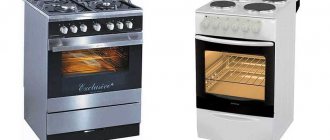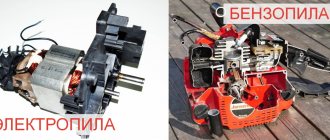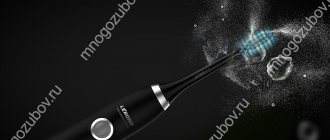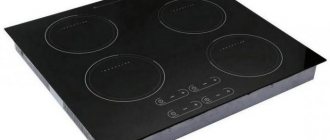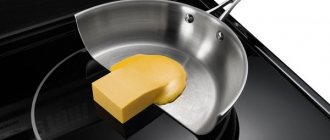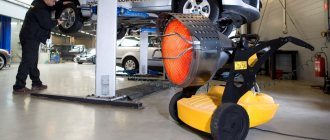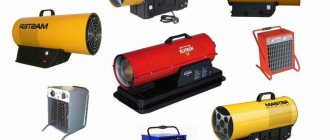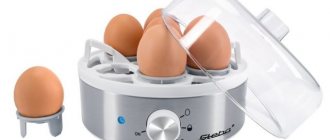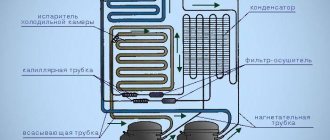In this article
- How does an electric toothbrush work?
- Design features and operating principle of the irrigator
- Irrigator or brush: is it worth choosing?
- What is better - a waterpik or a toothbrush?
When thinking about quality oral hygiene, many people ask the question: which is better - a waterpik or an electric toothbrush? To answer this question, you first need to understand how both of these devices work and what problems they solve.
How does an electric toothbrush work?
An electric brush is a more technologically advanced version of a regular toothbrush. It is a tool for primary oral hygiene, helps remove food debris from the surface of the teeth, clean the enamel from soft and hard plaque.
The difference between an electric brush and a regular toothbrush is the vibration of the bristles, which is provided by the operation of an electric motor. Most often, the motor is built into the handle of the device and is powered by batteries or a rechargeable battery.
The bristles of an electric toothbrush can move in different directions - in a circle or up and down, effectively softening and removing mineral plaque.
Electric toothbrushes are divided into different types based on the speed of movement of the bristles.
- Sound model.
It cleans the surface of the teeth thanks to a combination of sound waves and vibrations of the bristles with a certain amplitude. Such a device makes more than 20 thousand movements per minute and, with the help of friction, even removes plaque, preventing it from hardening and forming deposits on the teeth. Using sound models with different attachments helps keep teeth clean and prevents the formation of stones.
- Ultrasonic toothbrush.
It creates an ultrasound wave that is inaudible to the human ear, so it works almost silently, but provides high quality teeth cleaning. An ultrasonic brush not only effectively removes large stains, but also has a destructive effect on bacteria that form plaque on teeth. It copes with soft and pigmented plaque, promotes better penetration of cleaning pastes into the tissues of the oral cavity.
Most models have power regulators and several operating modes, which makes their use as convenient and comfortable as possible. Among the disadvantages, one can note a rather rough effect on crowns, veneers and fillings, which can lead to their early wear and destruction.
What is the difference between a water flosser and an electric toothbrush?
The difference between an irrigator and an electric brush is both in design and purpose. To catch the differences, you need to consider the features of both devices.
An electric toothbrush is, in fact, little different from a regular one. It also has a handle and a working head with bristles, which are responsible for removing plaque and hard deposits from the enamel surface. But if a regular brush is intended for manual cleaning, then an electric one is equipped with a motor that transmits frequent vibrations to the nozzle. The bristles of the device move back and forth or up and down at high speed and remove plaque with high efficiency.
Electric brushes can be powered by mains or battery
The difference between an irrigator and an electric toothbrush is that the device is designed to treat the oral cavity with a stream of water under high pressure. The device delivers a regular filtered liquid or medicinal solution to the surface of the enamel and to hard-to-reach places, cleans the gum pockets of food debris, massages the soft tissues and prevents the formation of hard deposits.
Attention! It is recommended to use an irrigator for braces and dentures in the oral cavity. Caring for artificial structures using only an electric brush is quite difficult.
Design features and operating principle of the irrigator
Both brushes and irrigators are designed for oral hygiene. But these devices are not identical in their purpose. If an electric toothbrush is a primary hygiene item, then an irrigator is a secondary item. This means that any cleaning should begin with the use of a brush, which removes the main contaminants, and only then can you proceed to cleansing the oral cavity with an irrigator. It does not replace a toothbrush, but helps to bring the cleaning result to perfection. How does this device work and work?
It is a device that delivers a directed stream of pulsating water under pressure into the oral cavity. Contacting the teeth and gums, the jet cleans well those areas where the brush cannot reach. Using an irrigator, it is convenient to clean the interdental spaces without traumatizing the gums, take care of braces, implants, dentures, and wash away food debris and dirt from gum pockets and from under dental structures.
The irrigator acts on the gums much more delicately, provides a gentle massage, improves blood flow, and strengthens the gums. Since the irrigator can remove dirt even from difficult areas, there are almost no germs left in the oral cavity, which effectively solves the problem of unpleasant odor.
Dentists recommend using this device to everyone who cares about the health of their teeth, but especially to people with sensitive gums and those who wear dental appliances.
Despite the advantages of this device, it cannot be said that the irrigator is better than an electric toothbrush. It cannot be a full-fledged replacement, since a stream of water does not provide a 100% mechanical cleaning effect. The device cannot completely remove complex plaque and tartar; a brush and paste are needed to solve this problem. But as complementary hygiene products, a water flosser and an electric toothbrush work very effectively.
Is a toothbrush important?
Conventional, electric and ultrasonic toothbrushes are classified as primary oral hygiene products. They remove bacterial plaque from the enamel and clean out large pieces of food left after eating. However, such devices are not capable of efficiently cleaning the dental space. More recently, dentists recommended using dental floss for these purposes. Now the opinions of experts are divided: studies show that the use of floss is ineffective and dangerous.
Therefore, for secondary oral hygiene it is better to use irrigators. A directed jet of liquid efficiently cleans gum pockets and interdental spaces. In this case, injury to the gums is excluded.
Is a waterpik a substitute for a toothbrush? No, it doesn't replace it. However, brushes and irrigators complement each other perfectly and provide comprehensive oral care.
Irrigator or brush: is it worth choosing?
If the choice is “irrigator or electric brush,” many will prefer the latter, since it is an item of primary hygiene.
There is still an opinion that it is not necessary to use an irrigator, and for good hygiene it is enough to choose a good brush.
In fact, it is wrong to put yourself before the choice of “irrigator or electric toothbrush.” Just as the first cannot replace the second, the brush cannot effectively cope with the tasks that the irrigator solves.
The bristles cannot fully clean the interdental spaces or remove food debris from under bridges and other orthopedic and orthodontic structures. The brush is not able to provide useful hydromassage for the gums, which serves as a prevention of bleeding, periodontal disease, and inflammatory processes. Even the best quality brush cannot clean your braces as well and as carefully as a pulsating stream of water will.
Dentists are sure: there is no need to choose what works best. The best option is to use all available means for hygiene of teeth and gums.
By using an irrigator, toothbrush and floss at the same time to care for the oral cavity, you can achieve maximum cleaning results, ensure healthy teeth and gums, and prevent the development of a number of dental diseases. It is important to use the available tools in the correct order.
- The first stage is mechanical cleaning with a brush and paste.
- The second is to use dental floss to remove dirt from between teeth. If you have sensitive gums that immediately bleed from contact with the thread, then you can abandon the second stage and immediately move on to the next one.
- The third stage is cleaning with an irrigator. When the main contaminants have been removed, it's time to begin the final procedure. The water jet penetrates into hard-to-reach areas and removes all remaining dirt, ensuring impeccable oral hygiene.
What is better to buy - a travel waterpik or an electric toothbrush?
It all depends on the purpose of the purchase. If this is a more thorough cleaning of teeth in hard-to-reach places, in the interdental spaces, gentle but effective cleaning of dentures and bridges, you can give preference to an irrigator. However, it should be used only after brushing your teeth as usual, no matter with a regular or electric brush.
If the purpose of the purchase is to more thoroughly clean the enamel surface, in this case there is no need to resort to using an irrigator.
An electric brush will do a better job of this. There are enough models on the market to choose the right one in terms of functions and price.
The same can be said about all devices designed to clean the oral cavity.
Little Doctor LD-A8
Let's compare these two oral care devices.
The purpose of a toothbrush, its functions
With the advent of electric brushes, the cleaning process has become much faster, more effective and even more enjoyable. The device has several modes, and their number may vary for different models. Often, electrical devices have a timer, which makes it convenient to control the duration of the procedure.
The mechanism that rotates the head along a certain trajectory is designed so that these movements carefully clean the enamel and do not damage the gums.
The head rotates at a speed of 5,000 to 30,000 rpm. At this speed, cleaning takes no more than three minutes. In addition, the rotating head easily reaches hard-to-reach places where brushing your teeth is not always convenient.
Periodontal attachment
Some instruments have a special sensor that monitors pressure on the gums, thereby preventing injury to them.
Dentists advise regularly changing the attachments of the device, then the tool will only bring benefits. The frequency here is the same as for a standard brush - at least once every three months.
It is recommended to store the device open, with its head facing up. After each use, the device should be rinsed with running water.
Replaceable nozzles, varieties
The main advantage of an electric tool is that it cleans teeth more thoroughly than with classic brushing. The device has virtually no disadvantages: if you use it correctly, change attachments on time, store it correctly and use it only for its intended purpose.
However, when choosing an electric brush and replacement heads, you should take into account the condition of the gums and tooth enamel in order to avoid injury and micro scratches.
What is better - a waterpik or a toothbrush?
The very formulation of the question - “brush or irrigator” - is incorrect. You can compare devices that have a similar operating principle or perform the same functions. The design and operating features of a brush and a dental irrigator are different. An irrigator does not replace a brush; these devices solve different dental problems in different ways. Therefore, it is wrong to say that it will be better to clean your teeth. The best option is comprehensive cleaning using an irrigator and a high-quality electric toothbrush.
Please note that these devices may be contraindicated for people with certain dental diseases and conditions. Therefore, before the first use, it is advisable to visit a dentist, check the condition of the oral cavity and, together with a professional, select the optimal hygiene care regimen.
Rating of the best electric toothbrushes with irrigator
The irrigator does not replace brushing your teeth, and it is recommended to use the devices together. Therefore, manufacturers of medical equipment offer special complex devices. They are sold on the market under the name dental centers, and buying them is usually profitable. You will have to pay less for the set than for two devices purchased separately.
JetPik JP200 Travel
The device combines the functions of two devices and is intended for daily use. It is equipped with a pair of nozzles - a regular oval one and one for a water jet. Delivers liquid under pressure up to 550 kPa. The device uses sonic cleaning technology; the device makes up to 20,000 vibrations per minute.
Attention! It is convenient to take the dental center on trips, since it is powered by a battery.
JetPik price starts from 8,600 rubles Pros
- can be charged via USB;
- three floss cartridges included;
- there is a tongue cleaner;
- Vibration intensity and jet pressure can be adjusted.
Minuses
- high price;
- no attachments for crowns and braces;
- the tip does not rotate.
Oral-B Professional Care MD204
Inexpensive but functional, the stationary dental center comes with four attachments, including an oval one with bristles, and supports switching between several power levels. Using the device, you can not only brush your teeth, but also massage your gums, as well as slightly whiten and polish your enamel.
You can buy Oral-B OxyJet MD204 from 4,400 rubles
pros
- good equipment;
- spacious solution tank;
- There is a wall mount.
Minuses
- The jet pressure is quite weak;
- The electric brush does not perform rotational-translational movements.
Philips Sonicare AirFloss Pro/Ultra HX8424/302
The electric dental center is designed to remove complex plaque and clean hard-to-reach areas of the oral cavity with a stream of water. It consists of an irrigator and a brush in separate housings, powered by a powerful battery. The device allows you to adjust the number of water jets and their pressure, there is a timer. The brush in the device uses sonic technology and performs 31,000 vibrations per minute cycle.
The price of the Philips Sonicare dental center starts from 8800 rubles
pros
- good power;
- copes with dense plaque;
- There is a triple spray mode;
- massage and whitening functions are provided.
Minuses
- often requires recharging;
- supplied without stand or case;
- The water tank is very small.
